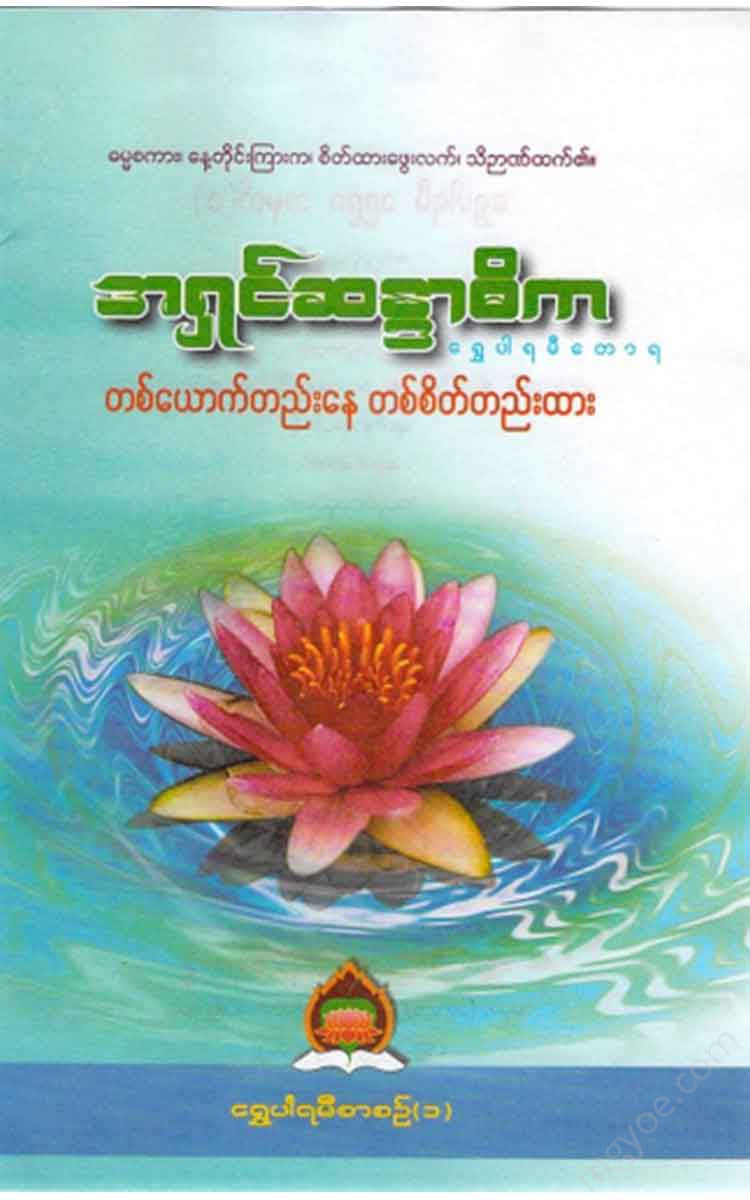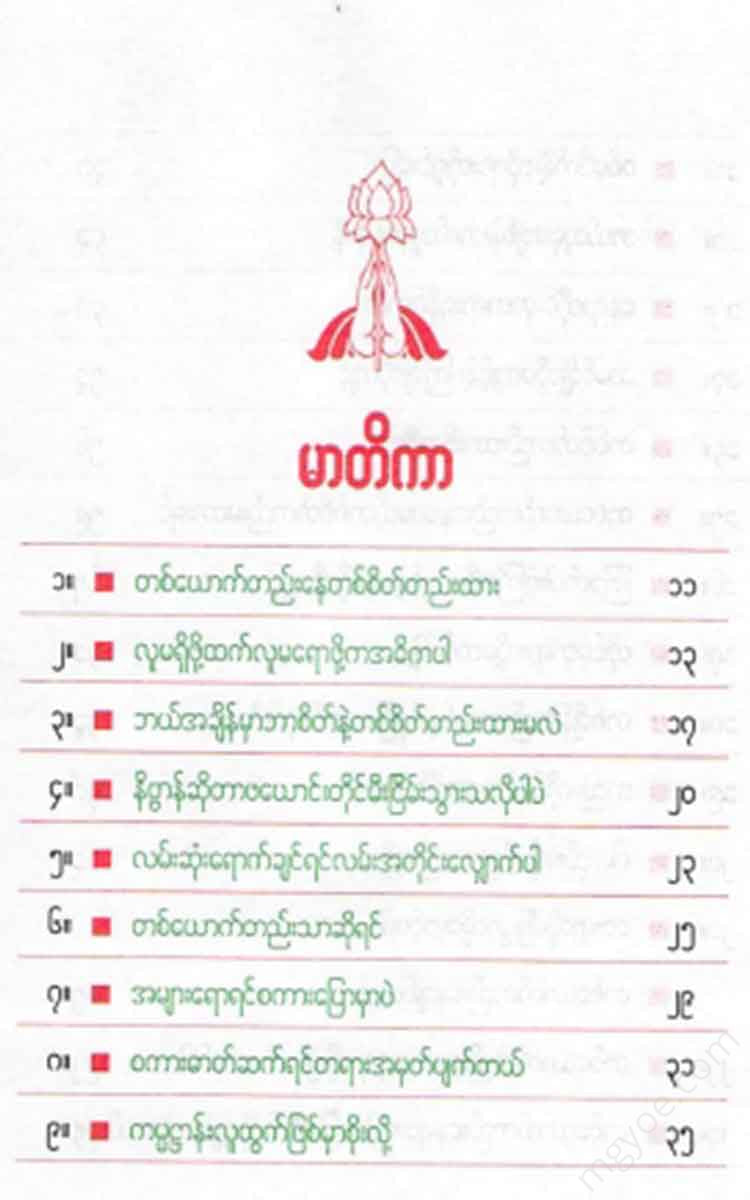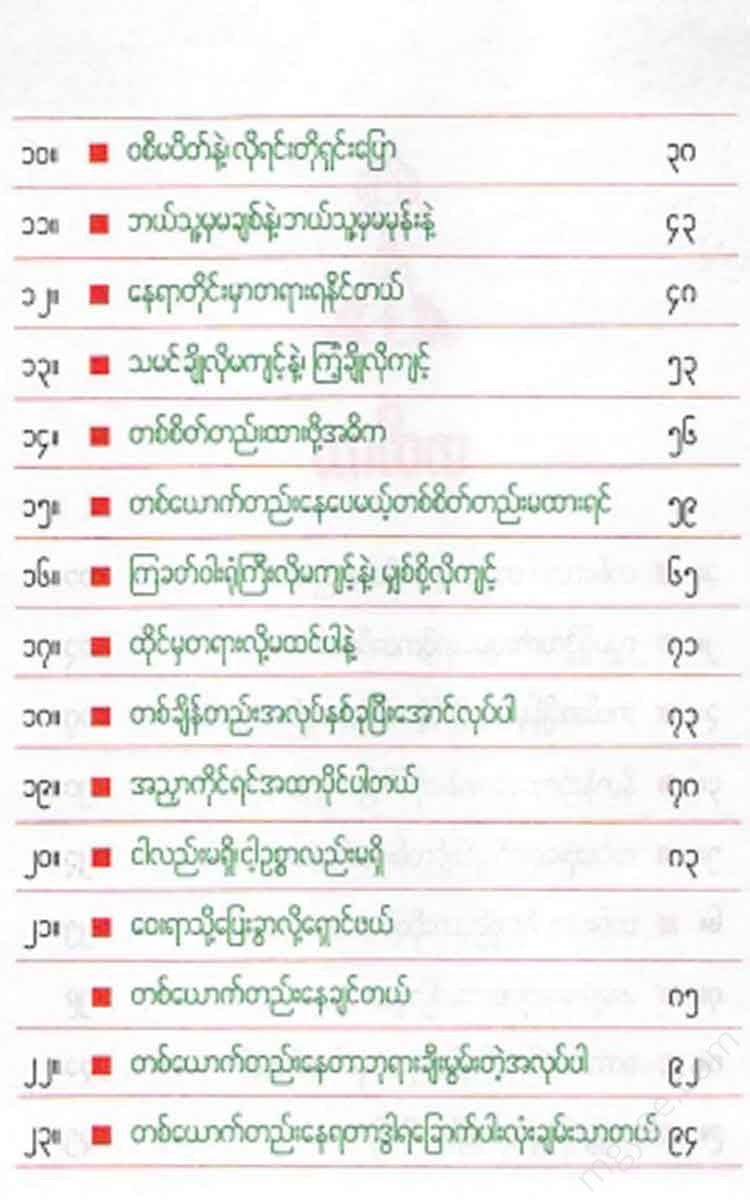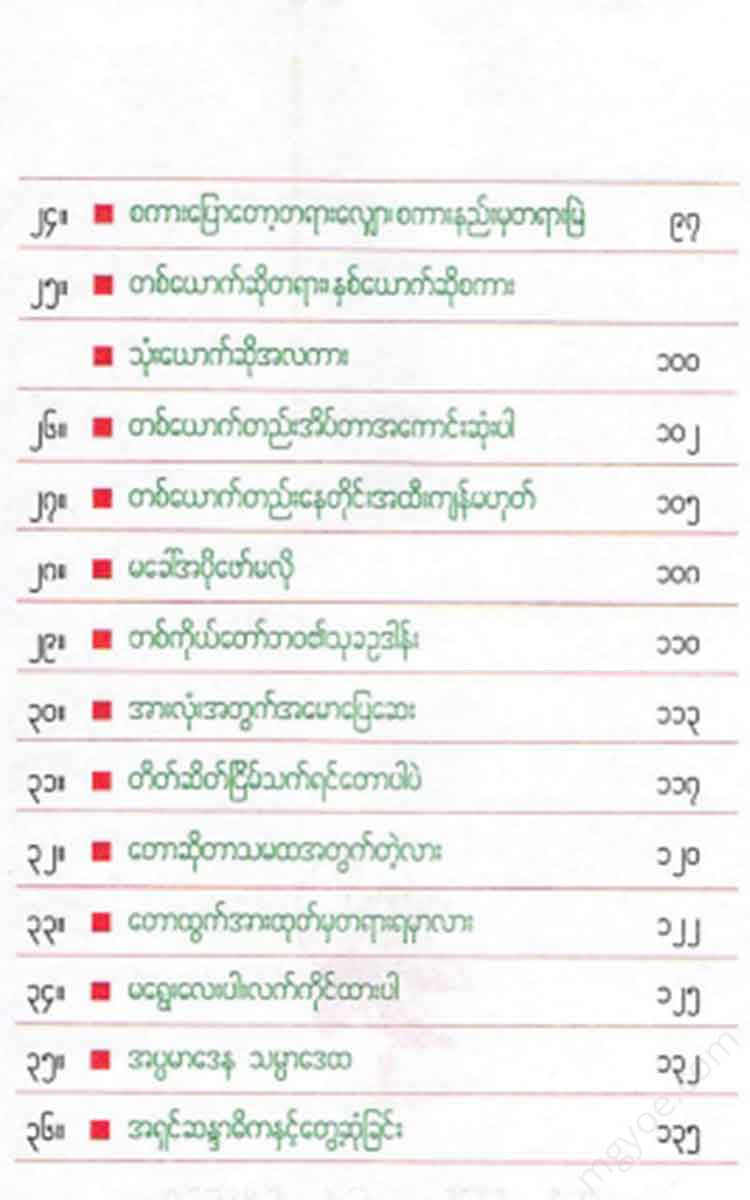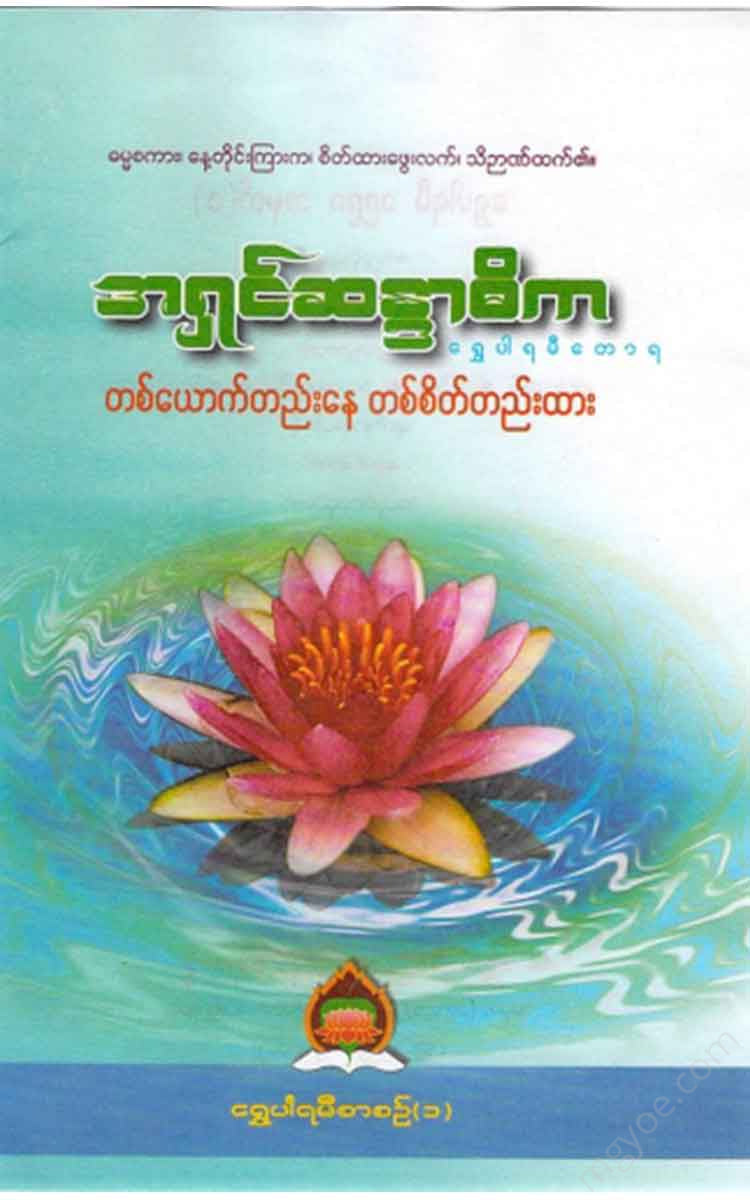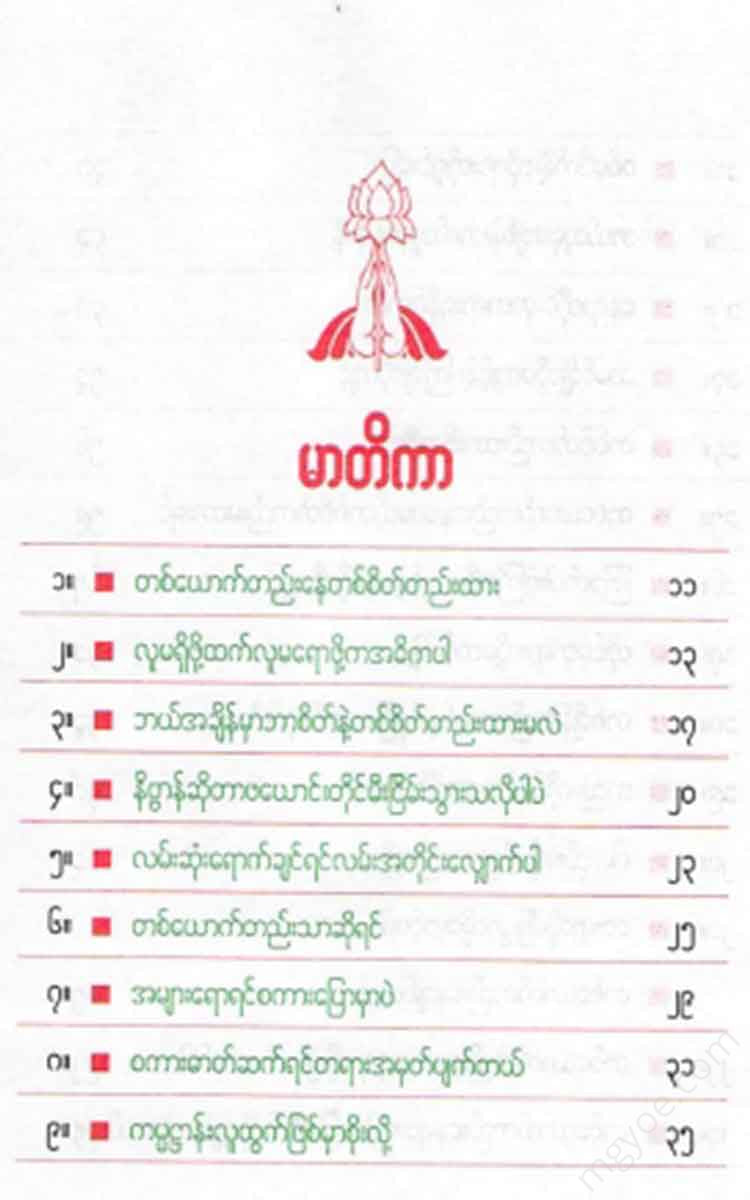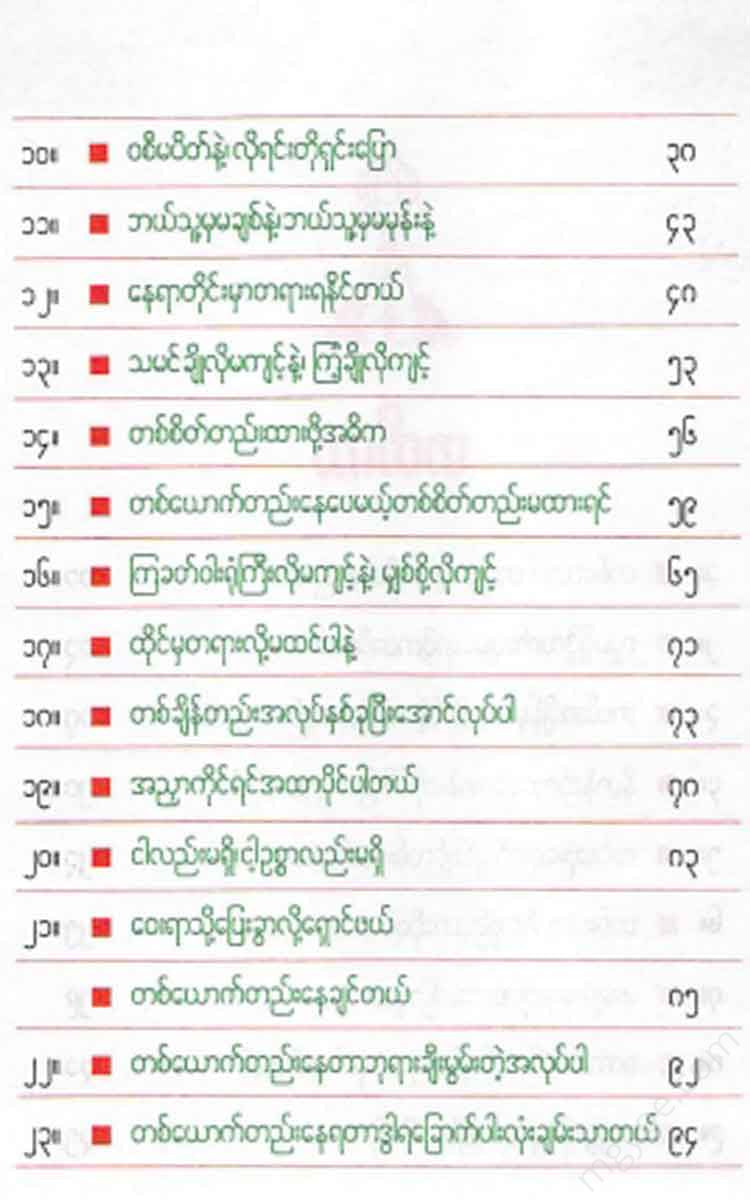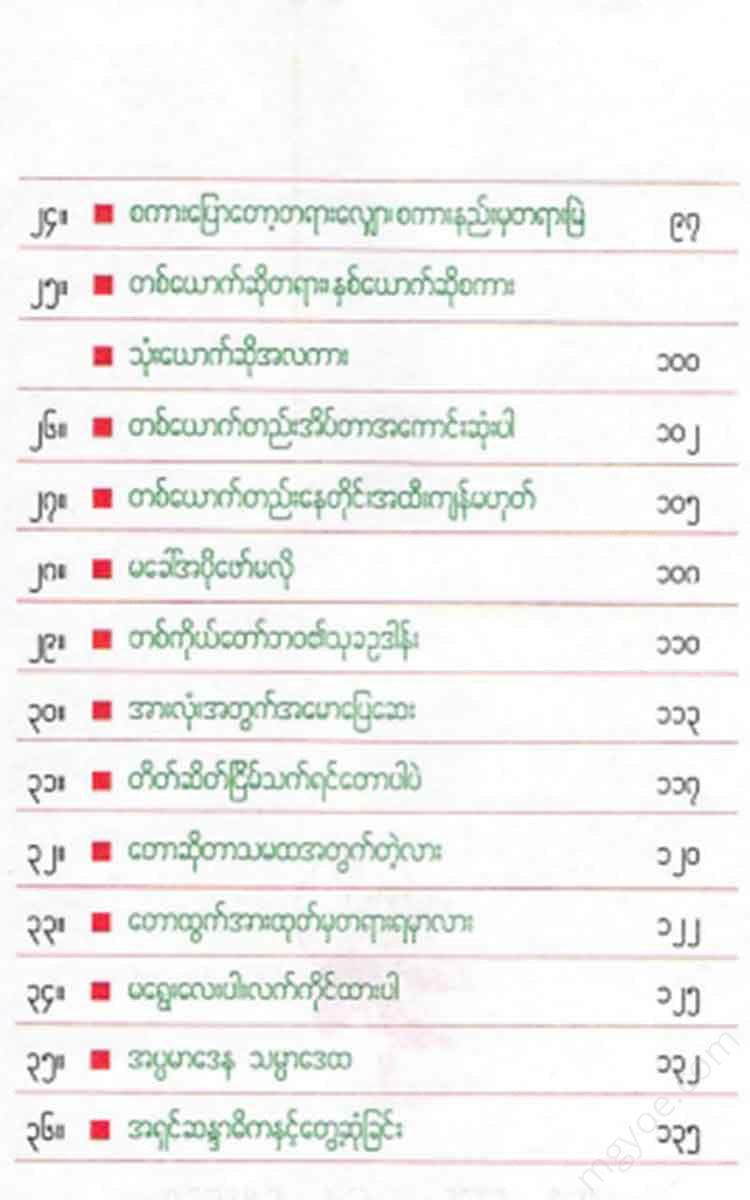Other Websites
Ashin Sandadhika - Staying alone and single-minded
Ashin Sandadhika - Staying alone and single-minded
Couldn't load pickup availability
Stay alone, stay united.
The guideline of "staying alone and single-minded" is a guideline that every person who desires enlightenment and Nibbana must follow and practice.
If a person truly desires the path to Nibbana, he must live alone. He must be single-minded. Because only by living alone and being single-minded can he realize the path to Nibbana.
In fact, it is not only those who want to attain the path of enlightenment that should follow it. It is also for everyone who wants to be happy, for everyone who wants to be happy at a higher level.
The work of Vipassana meditation is not something that only those who want Nibbana should do. It is something that everyone who wants happiness should do. Because the work of Vipassana meditation can provide a high level of happiness. The happiness of Vipassana is the highest level of happiness among worldly happiness.
There are seven (7) kinds of happiness in the world. Human sensual pleasures, divine sensual pleasures, meditation pleasures, insight pleasures, the path of happiness, the birth of children, and the bliss of Nibbana. Of these seven (7) kinds of happiness, the first four (4) are worldly happiness, and the last three (3) are worldly happiness. Divine sensual pleasures are higher than human sensual pleasures, and divine sensual pleasures are higher than meditation pleasures, so the first and last happiness are higher than the first.
If you are too happy in samsara to desire worldly happiness, you should seek the highest level of worldly happiness, Vipassana happiness, which is not available to anyone with great intelligence.
It's more important to not be crowded than to be without people.
In literary terms, "being alone" refers to "physical separation", and "being single-minded" refers to "mental separation". "Nibbana" refers to "material separation".
There are (3) types of Vivakadharma.
(1) The physical and mental
(2) The mind,
(3) There are (3) Upadhi Vivaika.
The word "vivaika" means "peace of mind." "Kayavivaika" means "peace of the body."
What I am free from is my own companionship, my own companionship with other people and beings. Being alone, without mixing with any companion, without associating with any person, is called "Kaya-Vivaka".
"Being alone" doesn't mean you have to go into the dark forest alone and cut off from the world. (If you can, that's the best way to do it.)
A person cannot live alone, isolated from their surroundings. Even a person living alone in the forest must have some degree of connection with their close friends. It is not possible to live alone all the time.
The essence of the word “alone” is not about having or not having people around you. It is about mixing with the people around you or not. I don’t mean being alone by not having people around, I mean being alone by not mixing with people. It is more important to not mix than to not be.
No matter how many people are around you, if you don't mix with any of the five (5) types of people, you can be considered alone.
There are (5) types of mixing.
(1) Visual mixing.
(2) Mixing through.
(3) Mixing through words.
(4) Mixing by means of utensils.
(5) Mixing by touch.
If you look at the people around you without looking at them, you will look here and there, and then you will judge them in your mind, and if you judge them, you will love them, if you judge them you will hate them, you will wink at them, you will stick out your tongue, and so on, and this is called visual confusion.
Whether you're listening to the sounds of people talking and laughing around you while doing something, or listening to the sounds of musical instruments, this is what happens when you mix things up.
If you gather around people around you and talk, asking them questions and they answer, whispering and gossiping, gossiping and gossiping, etc., this is called verbal mixing.
We will be in a chaotic relationship, using his things for ourselves, and others will be using our things for ourselves, sharing his joys and sorrows, and others will be sharing our joys and sorrows, exchanging feelings and connecting with each other in our hearts. This is a combination of uses and uses.
They will be holding each other's hands, hugging each other's shoulders, touching each other's heads, touching each other's waists, touching each other's breasts, kissing each other's breasts, etc. This is a mixture through touch.
The time when one is mixed with one or more of these five mixtures is the time when one is with a companion. The time when one is not mixed with any of these five mixtures is the time when one is alone.
No matter how many people are around you, even if there are hundreds of thousands of people, a person who does not mix with the five types of mixing can be considered a loner.
We must always remember that the phrase "stay alone" means not being alone, but being alone.
When and what will you be united in mind?
Citta-vivaya is the tranquility of the mind. What is the tranquility of the mind? It is tranquility of the defilements and the aversions.
Keeping one's mind focused on insight, without any involvement of defilements or non-attachment, at all times, is called citta-viveka.
Since the Dhamma is primarily intended for people who are engaged in the practice of Vipassana, "one-pointedness" means having a single-minded focus on Vipassana.
For those who are working hard, the only way to be focused on the work that they are doing is to be “focused.”
The meaning of “one” in the phrase “one-minded” can vary depending on the place, time, person, and purpose. If you have this mindset here, that mindset is “one” for that place. If you have this mindset at this time, that mindset is “one” for that time. If you have this mindset with this person, that mindset is “one” for that person. If you have this mindset in achieving this goal, that mindset is “one” for that goal.
In worldly matters, the word "one-minded" can be used appropriately and appropriately.
For example, being diligent and interested in school is part of being a student. Constantly practicing to become proficient in your favorite sport is part of being an athlete.
The meaning of unity is very broad. It cannot be explained in detail. It can be interpreted in many ways. As broad as it is, it is also profound and important. Therefore, if you think about it wisely and expand it and use it correctly and in its proper place, you can achieve great benefits.
This is the main teaching for Vipassana, so the Vipassana mind is referred to as "one mind".
But a Vipassana yogi should not only develop Vipassana. He should also develop Samathabhavana in accordance with the situation and time.
The Buddha said, “The mind of insight must be elevated with concentration.” Therefore, as an accompaniment to insight, as a companion to insight, we must also cultivate concentration from time to time.
Just as when the mind is focused on the focus of insight meditation, one attains concentration, just as when the mind is focused on the focus of concentration meditation, one attains concentration.
But the mind that will be present most of the time is the mind of insight. For a Vipassana yogi, being in the mind of insight is the most important thing.
This is why I said, "I keep my mind focused on one thing at a time," meaning to keep the mind focused on one thing at all times.

